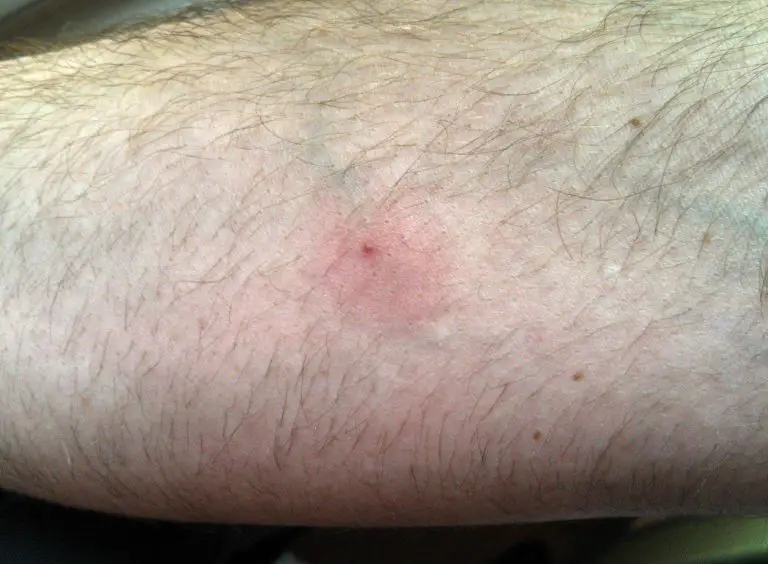

If the person is showing signs of severe allergies, call emergency services immediately. For adults 0.5 to 2 mg of intramuscular injection is recommended. Use 0.15 mg intramuscular injection for a child less than 5 years old and 0.3 mg intramuscular injection for children 5 years and above. If the victim is anaphylactic and suffers from a severe allergic reaction, administer adrenaline using an EpiPen or auto-injector. Let the sting area soak in water for a few minutes to fully remove any remaining stingers or parts of the ant left in your skin. Carefully wash the affected area with soap and clean water. Apply a cold compress or immerse the bites in cold water to alleviate swelling and pain. What To Do After Being Biten by Fire Ants Immediately seek medical advice if you have an allergy history of experience the following symptoms: In extremely rare cases, fire ant bites can cause a severe fatal allergic reaction or anaphylaxis. These blisters tend to become itchy and can take up to 10 days to fully heal. After several hours (or days), small blisters or pustules may appear and form on the sting sites. #Fire ant bites skin#
If the skin did not get better in an hour, you may notice a small blister filled with fluid that looks like pus. Anaphylaxis is a rare serious allergy that when left untreated, can become life-threatening.Īfter a string, the normal reaction of the skin is to have a small, itchy lump that typically gets better in an hour.
 Anaphylaxis – The second reaction is the most serious one. If the pain persists, you should consult with your GP. It can also result in swelling, redness, and blisters. Fiery pain – Bites from these ant species can cause severe burning feels or ‘fiery’ pain, hence the name. Most fire ants can sting repeatedly and can cause two types of reactions: Notice that their nests do not have visible entry or exit holes for extra protection. They are also found on tree logs or in open areas such as parks, football fields, and backyards. Their nest often looks like a mound of dirt and most often located under or around rocks. Their size ranges between 2mm to 6 mm, and their nests are usually the place where you often found a variety of ant sizes. They eventually landed in the Caribbean, Thailand, Taiwan, Philippines, Hong Kong, China, and of course, Australia.įire ants are characterised as having a reddish-brown color with a darker abdomen. Red Fire Ants are native to certain parts of America, particularly in the South, but they have become pests in many more countries. However, these fire ants do not pose a significant poisoning risk. They are considered to be a hazard because of the risk and effect on agriculture and the environment.
Anaphylaxis – The second reaction is the most serious one. If the pain persists, you should consult with your GP. It can also result in swelling, redness, and blisters. Fiery pain – Bites from these ant species can cause severe burning feels or ‘fiery’ pain, hence the name. Most fire ants can sting repeatedly and can cause two types of reactions: Notice that their nests do not have visible entry or exit holes for extra protection. They are also found on tree logs or in open areas such as parks, football fields, and backyards. Their nest often looks like a mound of dirt and most often located under or around rocks. Their size ranges between 2mm to 6 mm, and their nests are usually the place where you often found a variety of ant sizes. They eventually landed in the Caribbean, Thailand, Taiwan, Philippines, Hong Kong, China, and of course, Australia.įire ants are characterised as having a reddish-brown color with a darker abdomen. Red Fire Ants are native to certain parts of America, particularly in the South, but they have become pests in many more countries. However, these fire ants do not pose a significant poisoning risk. They are considered to be a hazard because of the risk and effect on agriculture and the environment. 
The fire ant is an ‘exotic’ species of ant that first comes to surface in Brisbane in February 2001. If their nest is disturbed, thousands of their ant army usually respond and attack by latching on and stinging. If you suffer from multiple bites, you may feel as if your body is on fire.įire ants are particularly dangerous for those with allergies as these species possess strong venom and can hold on with their mandible while stinging. Fire ant bites are painful and what’s worse is the burning or itching sensation from the sting can last up to an hour. If you had an encounter with a fire ant before, you know that tens or hundreds of them tend to all sting at once and can sting repeatedly (ouch).







 0 kommentar(er)
0 kommentar(er)
